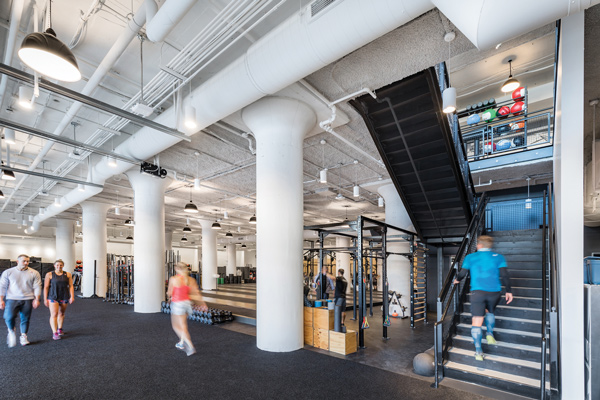The Workplace Makeover: From Office to Destination

To lure top talent, employers must integrate technology and unique experiences into their spaces.
The future of cities is predicated on people. As engines of economic growth, urban areas are the life source of the built environment, with 80 percent of global GDP resulting from their output. The most vibrant cities are those that attract diverse talent with varied skills, perspectives and backgrounds. All of this is driving change and transformation in how people live, work and play.
Looking at the built environment, there is no place that is being more profoundly impacted than the workplace. To retain and inspire the best talent, the most successful organizations will be the ones that adapt their workplace strategies to focus on creating a destination with visceral experiences, an “always in beta approach” and purpose through space.
Creating Visceral Experiences
The reason people come into the office has been disrupted. Technology, coworking and remote work have become ubiquitous, making it easier for employees to work outside of the office. However, the 2019 Gensler Workplace Survey of more than 6,000 workers across the U.S. found that the most innovative and productive employees spend 80 percent of the week in the office and 20 percent in other locations. Moreover, when people are in the office, their expectation for a more enriched experience is higher than ever before. Unfortunately, our research has found that only 22 percent of people consider their own companies to be excellent at delivering a differentiated experience. To engage talent, the workplace must see experience as non-negotiable.
Hyatt’s Chicago office understands this. The company’s headquarters-relocation program sought to bring all of the hospitality corporation’s colleagues together under one roof. Looking at the employee experience through the lens of their guests’ experiences, Hyatt’s new space incorporates a version of Hyatt’s seven guest touchpoints — arrival, social spaces, drinking and dining, work suites, activities and services, meetings and events, and departure — to build empathy between employees at headquarters and those working around the world.
As part of the overall design, Hub 8 was created. It’s a multipurpose reception, coworking, meeting, event and food, and beverage-focused environment that provides additional spaces for free-address colleagues. Just as Hyatt is unscripting its hotels, this new headquarters frees its employees from a traditional work environment.
Adopting an ‘Always in Beta’ Approach
A key part of the modern workplace is technology, and organizations are being challenged to keep pace with it. In the face of this, the workplace must embrace technological disruption by maintaining systems that work, experimenting with new technology and implementing the latest and greatest. In essence, they will have to adopt an “always in beta” mentality. The built environment will become more integrated with our lives, and the expectations for a seamless transition from the digital world to the physical world will prevail.

Reebok’s Boston headquarters has a two-story gym that’s visible from the street, a huge collection of shoes, a café and much more. ©Matthew Delphenich, courtesy of Gensler
DELOS, the wellness and real estate technology company that founded the International WELL Building Institute and the WELL Building Standard, has incorporated technology into its own workplace framework by creating a branded digital experience. Throughout the office, DELOS has installations that showcase real-time visual renderings related to wellness. In the stairwell, digital displays foster an interactive experience that illustrates the number of people using the stairs. The technology at DELOS demonstrates the possibilities of an organization that embraces the latest advances.
Providing Purpose Through Space
A growing number of workers are seeking more than the typical ladder of success. Instead, they’re looking for places where they can make a difference, grow from new experiences, give back to society and pursue their passions. Not only is meaning important to talent, but it’s also a crucial factor for businesses; studies show that employees who find purpose in their jobs are more likely to continue with their organizations. The workplace can help bridge the gap.
When Reebok redefined its Boston headquarters, the goal was to attract talent, energize innovation and amplify its brand. It did this in a big way. In the office there is a two-story flagship gym, which can be viewed from street level, a Maker Hub, one of the largest shoe collections in the footwear industry, immersive spaces, a café and more. The workplace also adopts unassigned team seating to encourage movement and interaction. The headquarters design embodies the evolution of the brand. When people walk into the office, they can see and feel the purpose of creating the brightest and fittest future.
The rising power of talent in the workplace and the pervasiveness of technology are eradicating the work-life divide. As people increasingly look for their work to provide purpose and connection, and aim to live more integrated lives, the workplace of the future must continue to evolve. Organizations that understand what motivates their teams — what drives them to succeed and engage — will have the tools to create a place employees want to be and an experience they will not forget.
Diane Hoskins and Andy Cohen are co-CEOs of Gensler.


